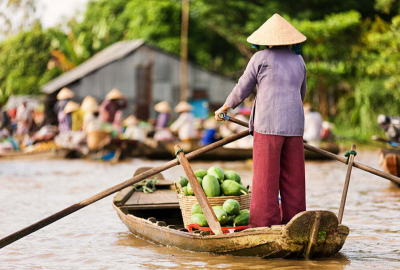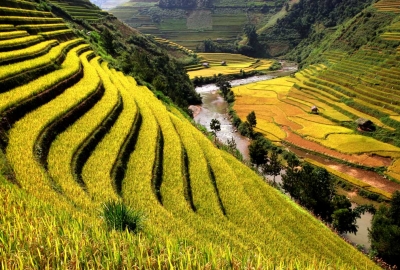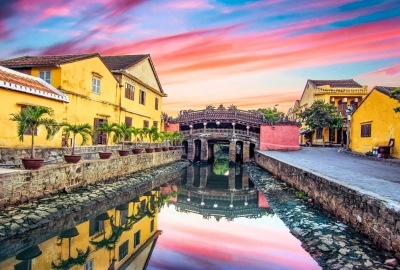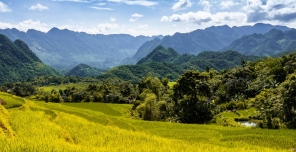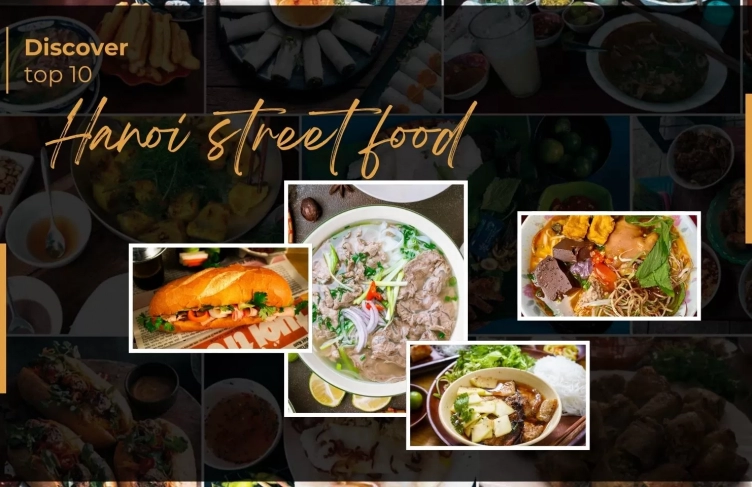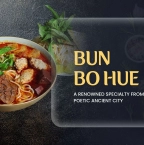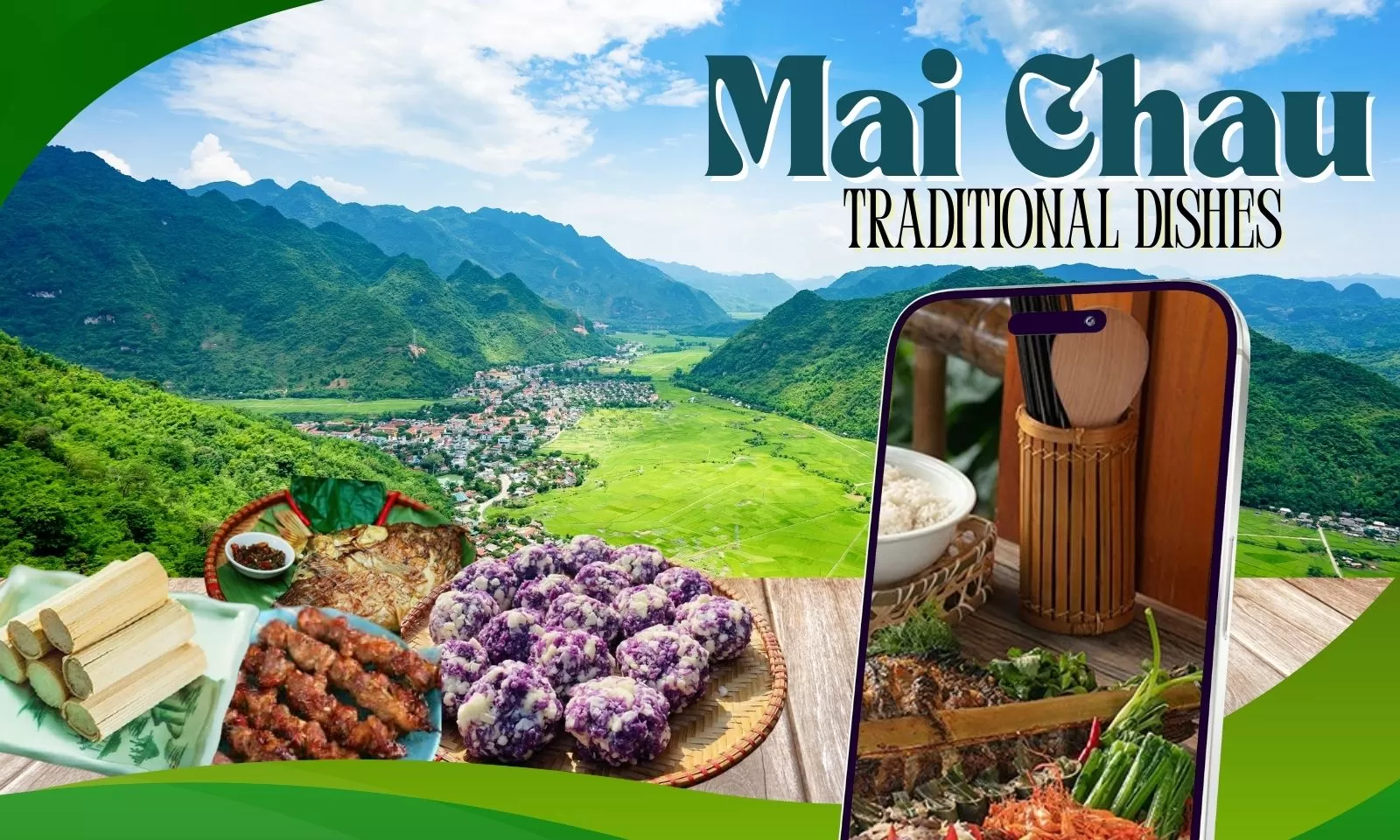
Top 9 must-try traditional dishes in Mai Chau

Tucked away in the misty mountains of Northwest Vietnam, Mai Chau is known for its tranquil landscapes and rich cultural tapestry. But beyond the scenic rice fields and stilt houses lies another treasure — its cuisine. Here, food is more than just a meal; it’s a heartfelt expression of the Thai ethnic people’s way of life, passed down through generations and deeply tied to nature and community.
Get ready to discover the hidden flavors of this mountain valley — and let your taste buds lead the way through some of the most memorable traditional dishes in Mai Chau.
Table of Contents
Culinary essence of Mai Chau
Mai Chau’s cuisine is deeply intertwined with its natural surroundings and the cultural traditions of the local Thai ethnic minority. Nestled in the highlands of northwestern Vietnam, the region is rich in mountain herbs, wild vegetables, fresh streams, and fertile rice fields — all of which provide the essential ingredients for its signature dishes. Meals are typically prepared using natural cooking methods such as grilling over open flames, steaming in bamboo, or fermenting, which preserve the original flavors of the ingredients while adding a unique rustic touch.
What truly sets Mai Chau’s culinary style apart is its simplicity and authenticity. Instead of relying on complex techniques or exotic seasonings, local dishes embrace minimalism — often seasoned with nothing more than salt, chili, garlic, or the distinctively fragrant mắc khén pepper. These Mai Chau ethnic dishes reflect not just the land’s abundance, but also the ingenuity and hospitality of the Thai people. Each meal is a story of tradition, seasonal awareness, and the deep connection between community and cuisine.
Top 9 traditional dishes you must try in Mai Chau
Mai Chau offers a variety of unique dishes that capture the essence of its landscape and culture. The following nine traditional dishes in Mai Chau showcase the diversity and rich flavors you can expect to find here.
Grilled Man pork skewers
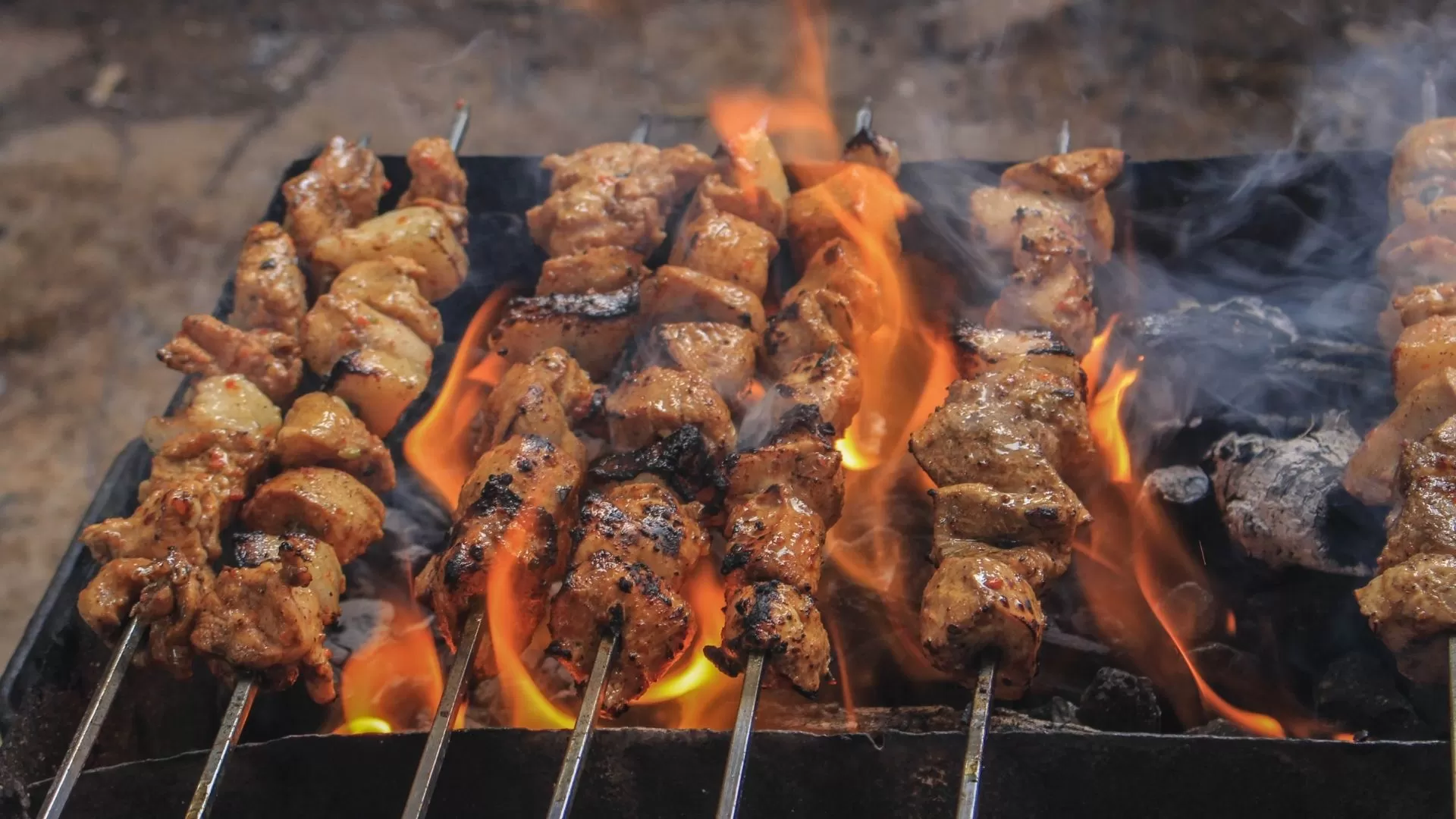
Mán pork comes from a local free-range pig breed known for its firm meat and rich fat marbling. The pork is sliced into generous chunks, marinated with traditional seasonings such as lemongrass, garlic, and crushed mắc khén, then grilled over charcoal. The sizzling fat and smoky aroma make it an irresistible street-side treat, often enjoyed with sticky rice or dipped in chili salt. This dish reflects the Thai people's deep connection to fire-based cooking and natural spices.
Sticky rice from upland fields

Sticky rice (xôi nếp nương) is a staple in Mai Chau meals and a symbol of abundance and community. Grown on terraced fields high in the mountains, the glutinous rice here has a naturally sweet and nutty flavor. It is typically soaked overnight and steamed in bamboo baskets, resulting in tender, fragrant grains that can be eaten plain or with toppings like sesame salt, shredded coconut, or grilled meat. Whether at festivals or daily breakfasts, sticky rice is central to Thai culinary tradition.
Bamboo tube rice (Com lam)
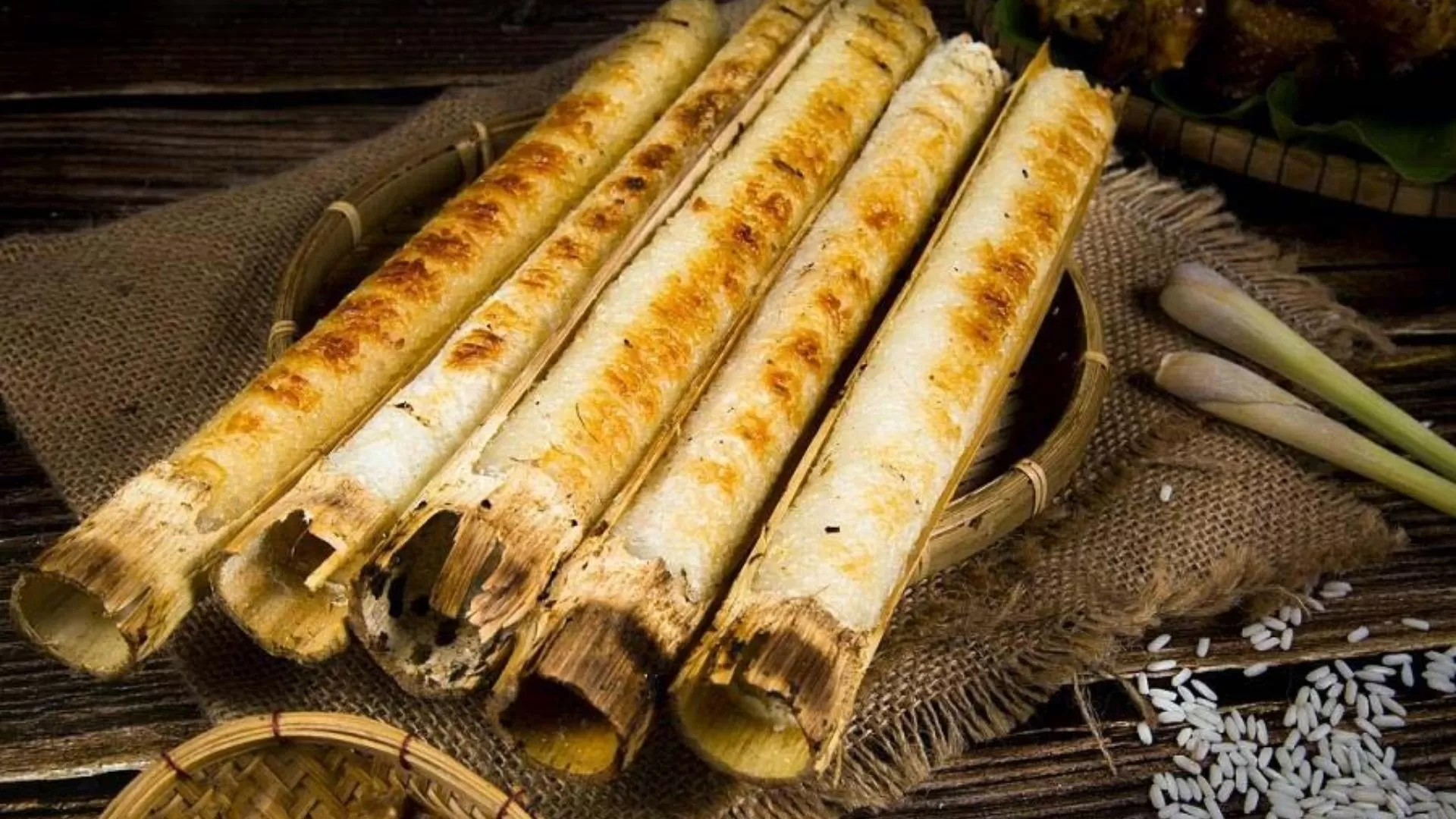
A signature dish of the Northwest, Cơm Lam is made by stuffing glutinous rice into sections of fresh bamboo, adding water, then roasting it slowly over open flames. As the rice cooks, it absorbs the subtle aroma of the bamboo and becomes lightly caramelized at the edges. Once done, the bamboo is split open, revealing tender, smoky rice with a hint of sweetness. It’s best enjoyed with grilled meats or sesame salt, offering both nourishment and a taste of rustic mountain life.
Stir-fried wild bee larvae with bamboo shoots
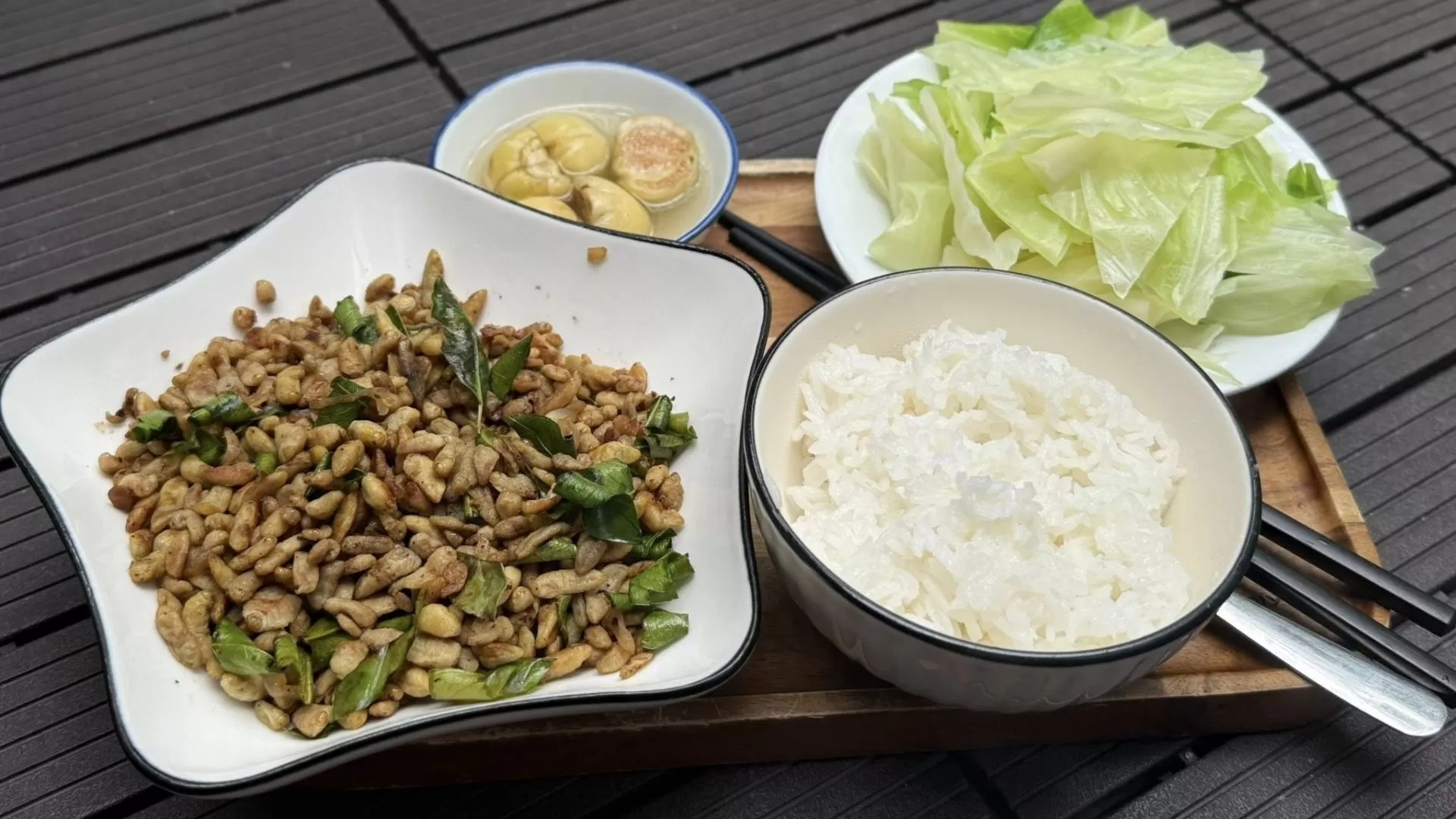
An adventurous and beloved local specialty, this dish combines protein-rich bee larvae harvested from forest hives with young, tangy bamboo shoots. The larvae are cleaned and stir-fried with sour bamboo and wild herbs until golden and aromatic. The contrast between the creamy texture of the larvae and the crispness of the bamboo delivers a bold and memorable flavor — a true representation of Mai Chau’s forest-foraging heritage.
Grilled stream fish

Mai Chau’s freshwater streams are teeming with small fish, often caught by hand or net in the early morning. These fish are cleaned, lightly seasoned with salt, lemongrass, and turmeric, and then grilled over an open flame until the skin crisps. Served whole and eaten with fingers, grilled stream fish are paired with fresh herbs and a dipping sauce made from lime, chili, and fish sauce. The simplicity and freshness of this dish reflect the locals' harmony with nature.
Hill chicken grilled with sichuan pepper (Mắc khén)
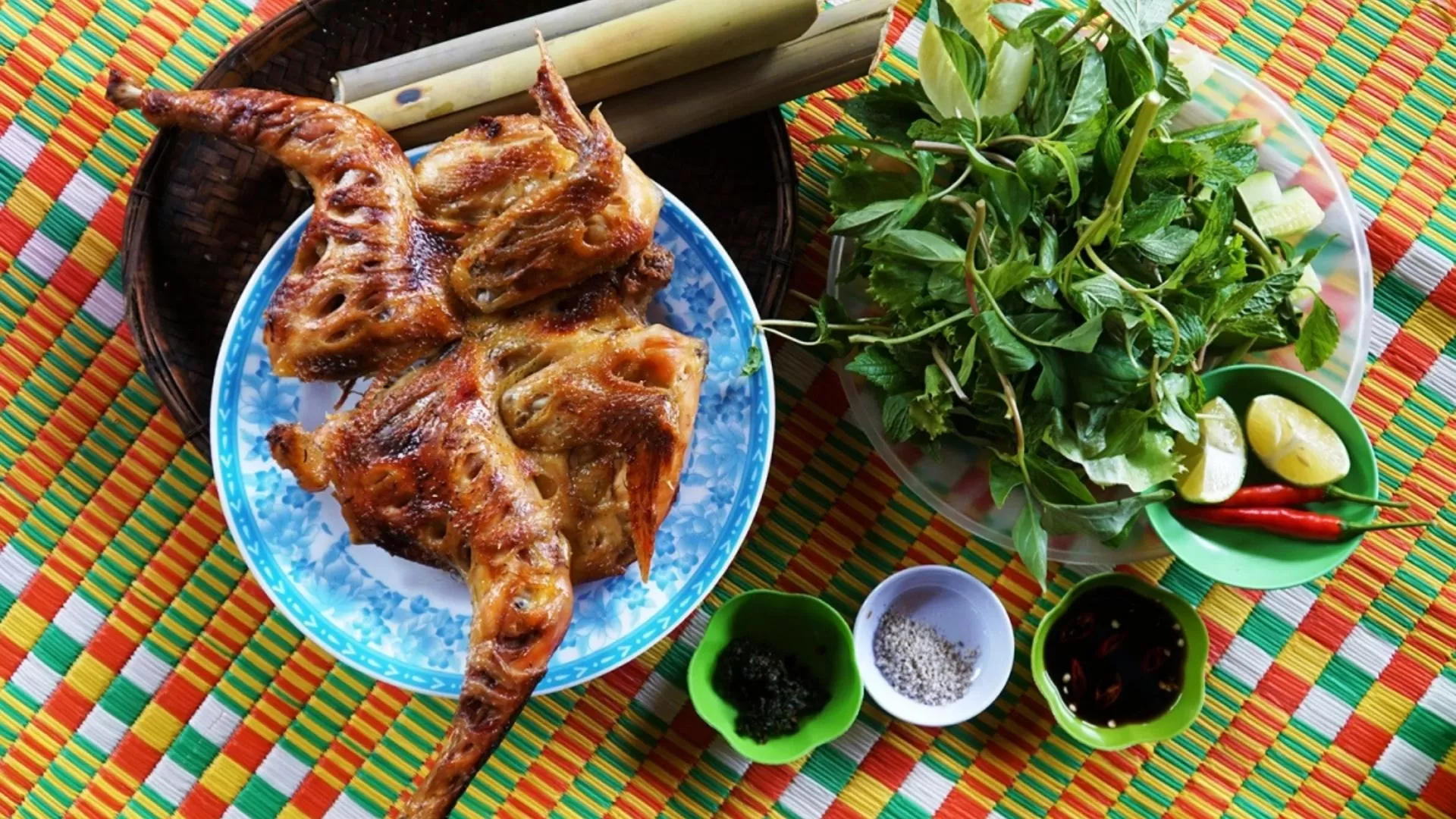
Hill chicken, or gà đồi, is raised naturally in forested areas, resulting in meat that is lean, chewy, and flavorful. Before grilling, the chicken is marinated with crushed mắc khén — a fragrant pepper native to the Northwest that adds citrusy, numbing notes. Roasted slowly over charcoal, the chicken turns golden and crispy on the outside while remaining juicy within. Often served whole and shredded by hand, it’s a true mountain delicacy meant to be shared.
Buffalo meat with Lom leaves
This traditional stew features thick cuts of buffalo meat simmered with lá lồm, a tangy native leaf that softens the meat while infusing it with a distinctive sourness. Cooked slowly in clay pots, the meat becomes tender and flavorful, absorbing the earthiness of the herbs and spices used. It is commonly served during family gatherings and rituals, highlighting the importance of buffalo in local life and the culinary creativity of using foraged greens.
Sour fermented meat
A time-honored preservation method, this dish involves marinating buffalo or pork meat with ground rice, salt, and herbs, then fermenting it in airtight jars for several days. The result is a slightly sour, chewy meat that pairs perfectly with rice wine and fresh greens. Though simple, it takes patience and knowledge to balance the fermentation correctly. It’s not just a dish, but a cultural ritual passed down through generations.
Mountain snails
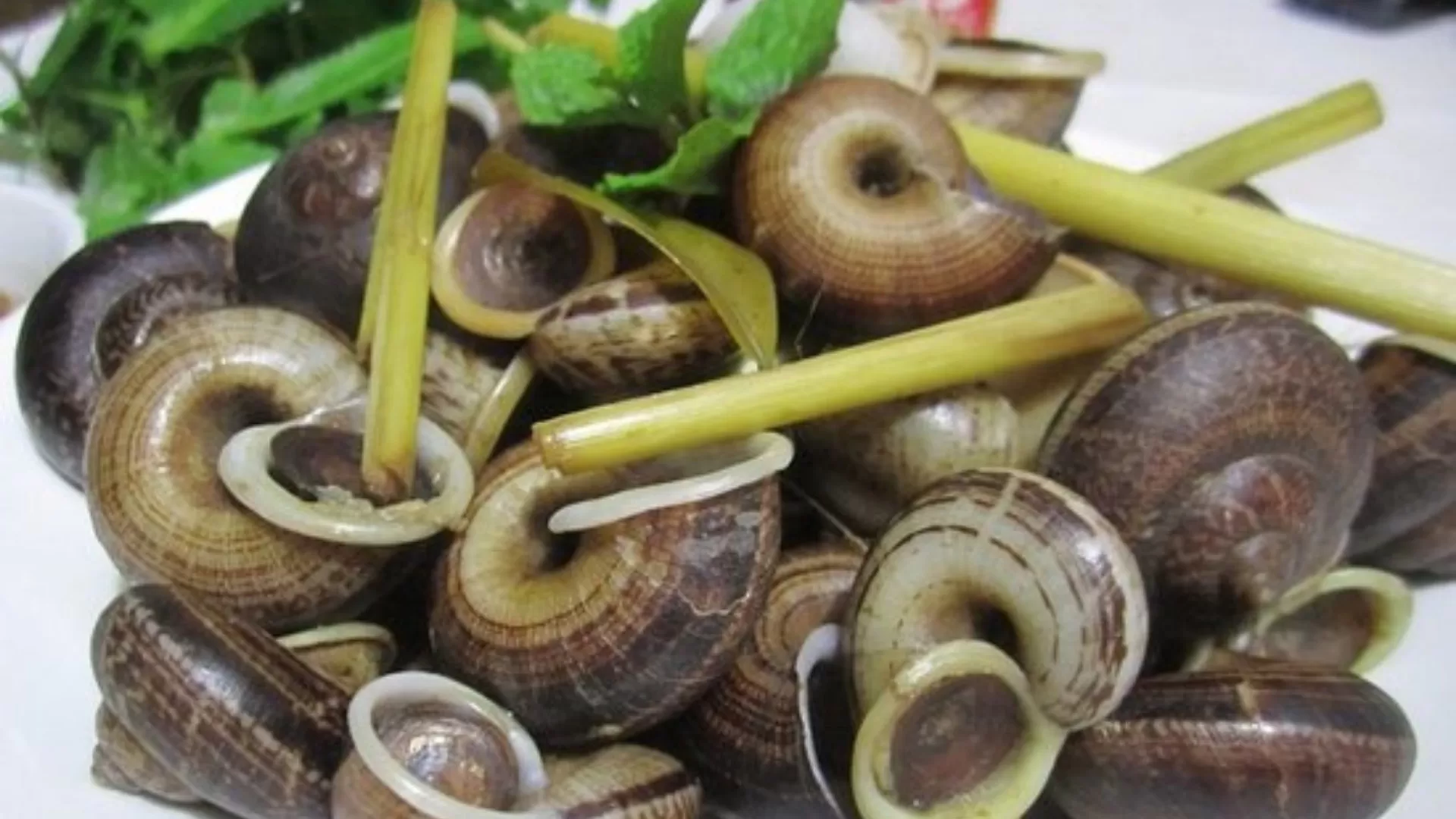
Found in the limestone hills around Mai Chau, mountain snails are highly prized for their clean, sweet flesh. They are typically soaked to remove grit, then stir-fried or grilled with herbs like lemongrass, wild betel leaves (lá lốt), and chili. The snails have a naturally firm, crunchy texture and a subtle earthy flavor that’s elevated by the use of local aromatics. For travelers, this dish offers an exciting encounter with the wild ingredients of the region.
Want to taste these local flavors in real life? Join our North Vietnam tour 10 days and discover Mai Chau’s culinary gems with hands-on experiences and authentic local meals.
Where to enjoy traditional dishes in Mai Chau
To fully appreciate the rich flavors of traditional dishes in Mai Chau, it’s best to taste them where they’re lovingly prepared — in local restaurants and family-run kitchens. Whether you’re looking for a casual meal or a cultural dining experience, here are three trusted places to enjoy authentic Mai Chau food specialties:
Meadow Mai Chau Restaurant
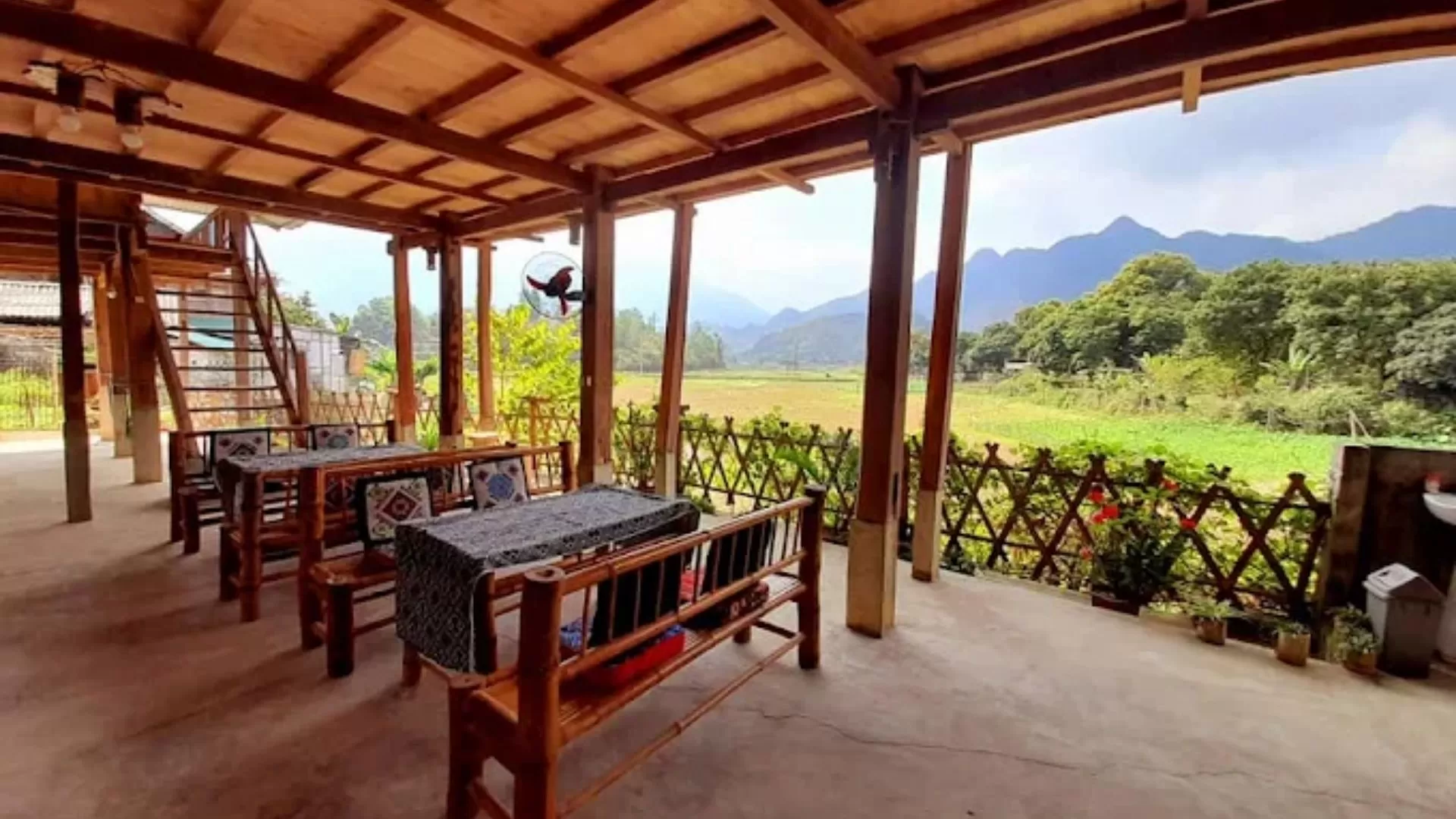
📍Address: Lac Village, Mai Chau, Hoa Binh Province
With an open, airy design that blends harmoniously with the surrounding nature, the restaurant offers a comfortable and elegant atmosphere. Guests can enjoy a diverse menu featuring authentic Thai ethnic dishes alongside Vietnamese and international cuisine. All meals are crafted from fresh, high-quality ingredients, ensuring rich and genuine flavors. This restaurant is ideal for those seeking a refined dining experience while exploring the unique culinary heritage of Mai Chau.
Hop Thuy Mai Chau Restaurant
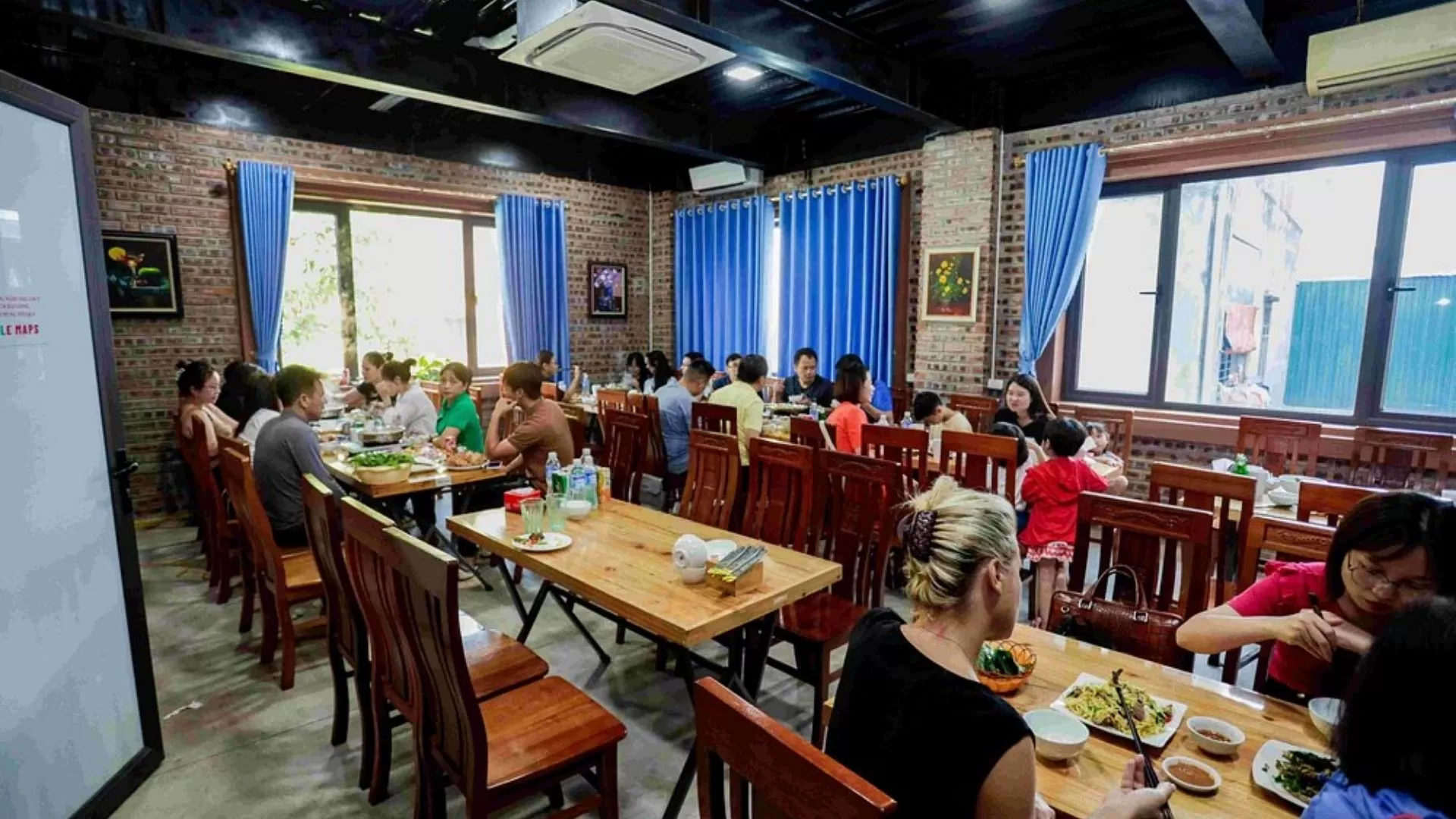
📍Address: Quarter 2, Mai Chau Town, Hoa Binh Province
Hop Thuy Restaurant is a long-established venue favored by both locals and tourists. With its spacious layout and warm hospitality, it is ideal for groups or families seeking a relaxed dining experience. The menu features a wide variety of Mai Chau food specialties, served in generous portions. The interior decor embraces local ethnic elements, creating an inviting environment where guests can not only enjoy delicious food but also learn more about the region's culinary culture.
Mai Chau Farmstay Restaurant
📍Address: No. 38, Lac Village 2, Chieng Chau Commune, Mai Chau District, Hoa Binh Province
Set amidst lush rice fields and tranquil scenery, Mai Chau Farmstay Restaurant offers a delightful escape into nature. The restaurant is part of a farmstay complex, allowing diners to enjoy traditional meals in a peaceful countryside setting. The dishes are prepared with care, often using produce from the surrounding area. Guests are invited to dine outdoors, breathe in the fresh mountain air, and immerse themselves in the authentic flavors of the Thai ethnic group. This is an excellent choice for those who value a blend of gastronomy and scenic charm.
Tips for exploring Mai Chau’s cuisine

To fully enjoy Mai Chau’s culinary offerings, some practical tips can help enhance your experience. From the best time to visit to cultural etiquette, knowing these details will make your food journey more enjoyable and respectful.
Best time to visit Mai Chau
Mai Chau’s culinary delights are best enjoyed during the dry season, from October to April, when the weather is mild and the local markets are bustling with fresh, seasonal ingredients. Visiting during traditional festivals, such as the Thai New Year (around April), can also give you a chance to try special festive dishes and witness authentic cooking traditions.
How to choose authentic local food
When selecting places to eat, look for restaurants and homestays that emphasize local ingredients and traditional recipes. Village eateries often prepare food in small batches using family recipes, offering a more genuine taste. Don’t hesitate to ask locals for their favorite spots — their recommendations can lead you to hidden gems that tourists often miss.
Respecting local food culture and etiquette
Mai Chau is home to several ethnic groups, each with its own food customs. When dining, it’s respectful to follow local practices, such as sharing dishes communally and using chopsticks or spoons properly. If invited to a local’s home, accept food graciously, even if it’s something unfamiliar. Showing appreciation for their hospitality and culinary heritage enriches your overall experience.
Mai Chau’s traditional dishes showcase the region’s rich culture and natural flavors, offering a truly authentic culinary experience. From fragrant sticky rice to smoky grilled meats, each dish reflects the harmony between the people and their environment. Enjoying these foods gives you a deeper understanding of the local lifestyle and traditions that have been preserved for generations.
Ready to explore these delicious dishes? Let Hanoi Voyages help plan your unforgettable Mai Chau food adventure!
Dream about your trip to Asia, in private
We are here to make it happen with youFREE QUOTE, WITHOUT OBLIGATION









